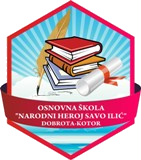result454 – Copy
result312 – Copy (2)
05/11/2025result552 – Copy (3) – Copy
05/11/2025The Maturation of Google Search: From Keywords to AI-Powered Answers
Following its 1998 inception, Google Search has converted from a fundamental keyword searcher into a dynamic, AI-driven answer machine. At first, Google’s innovation was PageRank, which positioned pages by means of the merit and total of inbound links. This guided the web from keyword stuffing aiming at content that captured trust and citations.
As the internet increased and mobile devices spread, search methods varied. Google brought out universal search to unite results (bulletins, photos, clips) and subsequently featured mobile-first indexing to reflect how people actually peruse. Voice queries employing Google Now and following that Google Assistant prompted the system to translate chatty, context-rich questions rather than terse keyword combinations.
The next step was machine learning. With RankBrain, Google embarked on analyzing in the past fresh queries and user desire. BERT pushed forward this by interpreting the shading of natural language—structural words, conditions, and links between words—so results better aligned with what people were trying to express, not just what they typed. MUM enhanced understanding through languages and forms, permitting the engine to link affiliated ideas and media types in more evolved ways.
Presently, generative AI is overhauling the results page. Experiments like AI Overviews blend information from assorted sources to deliver concise, circumstantial answers, routinely featuring citations and progressive suggestions. This diminishes the need to access assorted links to synthesize an understanding, while all the same pointing users to richer resources when they intend to explore.
For users, this improvement means more efficient, sharper answers. For writers and businesses, it credits richness, authenticity, and lucidity compared to shortcuts. In time to come, imagine search to become more and more multimodal—intuitively merging text, images, and video—and more bespoke, modifying to tastes and tasks. The odyssey from keywords to AI-powered answers is basically about shifting search from discovering pages to completing objectives.
